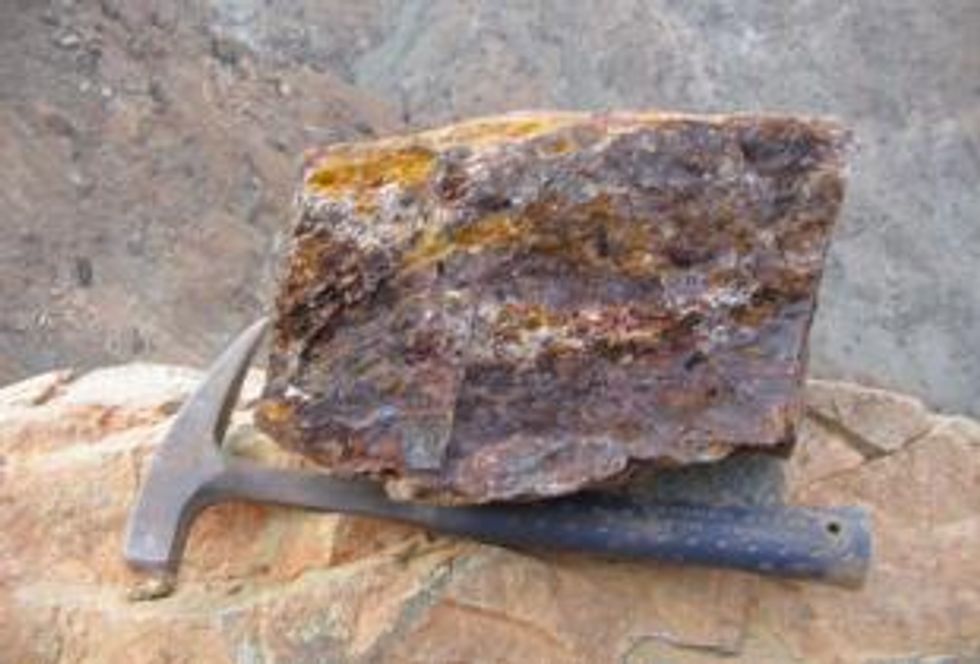The Alaska government’s direct support through incentives, information, and technical support provides a valuable asset for gold mining companies active in mineral development and overall investment prospects.
By Dave Brown – Exclusive to Gold Investing News
Gold exploration in Alaska has a rich and vibrant history predating the actual purchase of the territory from Russia on March 30, 1867, for $7.2 million at about two cents per acre. Although the oil and gas industry currently dominates the Alaskan economy, with more than 80 percent of the state’s revenues derived from petroleum extraction, the overall mineral wealth in the state is considerable. The state is host to large quantities of coal, iron, silver, lead and copper with nearly 65 percent of total U.S. zinc production coming from Alaska. It remains the second largest producer of gold in the United States with approximately 24,000 kilograms commercially mined last year.Gold mining production actually started from placers southeast of Juneau, Alaska in 1870. Areas near Fairbanks, Juneau, and Nome are responsible for most of Alaska’s historical and current gold production; although, gold is found throughout the area.
General Investment Climate
The current administration continues to provide a favorable business climate for statewide mineral industry growth with a fair and stable taxation and fee structure, and a progressive regulatory structure. In the most recent Fraser Institute’s Survey of Mining Companies: 2010 Mid-Year Update, Alaska has demonstrated a modest improvement within the top quartile to move slightly ahead of both Nevada and Wyoming. Its introduction into the top 10 worldwide jurisdictions underscores Alaska’s premiere position among American states. The survey is based on the opinions of mining executives representing 429 mineral exploration and development companies on the investment climate of 51 jurisdictions around the world and was conducted following the global recovery in commodity prices and the introduction of new regulatory hurdles and taxation in many jurisdictions. The state government’s direct support through incentives, information, and technical support provides a valuable asset for gold mining companies active in mineral development and overall investment prospects.
Mining and Exploration Activity
Fort Knox
Senior gold producer Kinross (TSX:K) is the current operator at the Fort Knox deposit mining by conventional open pit methods with production carried out on a year-round basis, seven days a week. The mine is situated approximately 26 miles northeast of Fairbanks, Alaska and high-grade ore is processed at the carbon-in-pulp mill, which has a daily capacity of between 33,000 and 45,000 tonnes per day. In 2009, Kinross reported proven and probable reserves: 3.7 million ounces of gold, and an expansion project is expected to extend the life of the mine from 2012 until 2018. The company believes that the project will double the life of mine production to 2.9 million gold ounces, and will increase Fort Knox production to an average 370,000 gold ounces per year during the next five years.
Greens Creek
Last year, Hecla Mining Company (NYSE:HL) produced a total of 67,278 ounces of by-product gold and 7.5 million ounces of silver at Greens Creek located in Southeast Alaska and adjacent to the Admiralty Island National Monument. In addition to gold and silver, the orebody contains zinc and lead. The company continues to explore and develop the resource completing approximately 39,000 feet of underground in-fill and exploration drilling in 2009.
Pogo
In July 2009, Sumitomo (TYO:5405) purchased the Pogo operations from Teck Resources Limited (TSX:TCK.B). The gold mine is an underground operation located 38 miles northeast of the community of Delta Junction in the eastern interior of Alaska. Last year, gold produced from the mine was 389,808 troy ounces, exceeding the 357,894 troy ounces originally forecast by the company. The mine is presently expected to produce an average between 350,000 and 500,000 ounces of gold per year over a 10-year mine life.
Kensington
The Kensington underground gold mine is located in Southeast Alaska and in June initiated production by silver producer Coeur d’Alene Mines Corporation (TSX:CDM). The company anticipates production for the remainder of this year to total 50,000 ounces of gold, with annual production averaging approximately 125,000 ounces of gold over an initial mine life of more than 10 years based on current company reserve estimates. Coeur is presently occupied in an exploration drilling program to expand the enterprise with approximately 1.5 million ounces of gold mineral reserves and additional gold mineral resources estimated at 767,000 ounces.
Gil Joint Venture
As reported by a subsidiary of Kinross last month, exploration and development work continues to show positive results on the Gil claims located in the Fairbanks mining district. The property is adjacent to the Fort Knox mines and claims are a joint venture of Teryl Resources Corp (TSXV:TRC), which remains engaged in the acquisition, exploration, and development of natural resource properties and mineral interests in Arizona and British Columbia, in addition to Alaska.
Donlin Creek Venture
The Donlin Creek property is a large, undeveloped, refractory gold deposit approximately 450 kilometres northwest of Anchorage. The joint venture between NovaGold (TSX:NG) and Barrick Gold (TSX:ABX) is expected to be one the largest gold mines in the world expected to produce more than one million ounces of gold annually, based on the current 33.6 million ounce gold reserves and the anticipated mine life of approximately 25 years. The operating mill is expected to process 53,500 tonnes per day. Optimization studies are currently underway and focused on the potential to utilize natural gas to reduce operating costs. Feasibility study revisions are expected to be completed in the second quarter of 2011.





